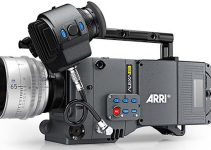Before you answer this question, there are a few important considerations you should bear in mind. First and foremost, it’s essential to know whether you’d like to round-trip between the two NLEs or you want to complete your project while utilizing only the provided tools and assets of either platform.
Undoubtedly, the second option will save you a lot more time and effort down the road, but it may be initially intimidating to decide which piece of software will fit your needs better. To put things into perspective and make this decision easier for you, US-based colorist and filmmaker Casey Faris shares his thoughts on the matter that should eventually help you to make the best choice for yourself.
If your timeline in Premiere Pro CC consists mainly of similar shots that are captured in the same lighting conditions with close color tones, odds are you’ll be able to pull this off seamlessly by applying a single primary grade all at once. In that case, just put and Adjustment layer on the top of your edit and make the color grading adjustments accordingly.
Occasionally, you may need to tweak a few shots further here and there, but overall this workflow will still be a lot more time-efficient and effective than sending your footage back and forth between the two editing applications all the time.
On the other hand, if you have a more complicated sequence consisting of multiple shots with different types of lighting or you need to deal with more scenes at once, then you might consider the option to use Resolve as your primary NLE and do the entire editing and color grading there.
The other major factor according to Faris is how detailed you’re going to get with your color grading. If you tend to make multiple subtle adjustments in different parts of each clip while using complex tracking, masks or keys, then again picking DaVinci Resolve should still make more sense for color grading.
All in all, considering the type of shots along with the intricacy and level of detail of your color grading workflow, these are two of the main factors you should take into account before you decide which of the two platforms will fit your needs better. As a rule, for simple grades on similar shots use Premiere Pro whereas for more complicated color grading tasks opt for Resolve.
Of course, there are always exceptions to that rule as every project is different. So, whether you agree with Faris or not, feel free to share your insight on the topic below even if you have an entirely different approach when it comes to picking the right NLE for editing and color grading.
[source: Casey Faris]
Disclaimer: As an Amazon Associate partner and participant in B&H and Adorama Affiliate programmes, we earn a small comission from each purchase made through the affiliate links listed above at no additional cost to you.





FCPX, Color Finale Pro.
Since I’ve been down this road and have successfully transitioned to DaVinci Resolve, I highly recommend staying away from the Adobe product line. In my situation, I found a “consumer-based product” designed by engineers that appear to have left years ago. In no way is it a “Pro” product. And, you know what, if I had my way, Premiere Pro would simply be called Premiere.
Just in case you think you can rely on the user group to get you through the entire Adobe process… The company is actually relying on “user experience” to create a working solution. What you don’t know, is that the Adobe product doesn’t work. You respond to them asking how it works, and if enough people ask about it, it may or may not get a fix. However, at the same time, they are literally charging you and, even worse, taking your free feedback and hard-earned issues, using the program, to make their product work. Even then, the product features don’t necessarily work because Adobe appears to have fired off the good engineers years and years ago!
In my professional opinion, you’re setting yourself up for failure utilizing the Adobe product line. Even though you are a beginner, you’re acquiring so many bad habits and are working w/ such a poor product that you won’t know when you’ve been “had” by a group of after-after-after-after-after-after-after-after-after-after-after software engineer hacks.
A bad workman quarrels with his tools 🙂
Straight up… Awesome! 🙂
It’s juste à stupid comment from a stupid people.